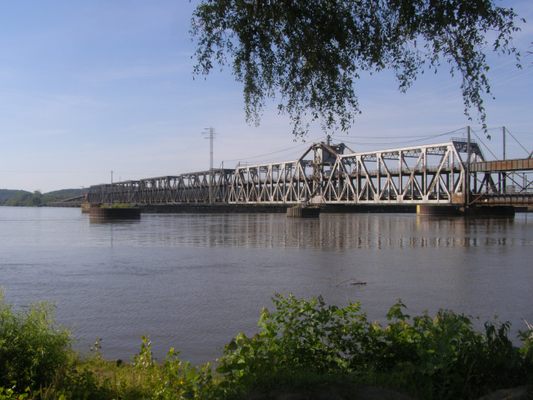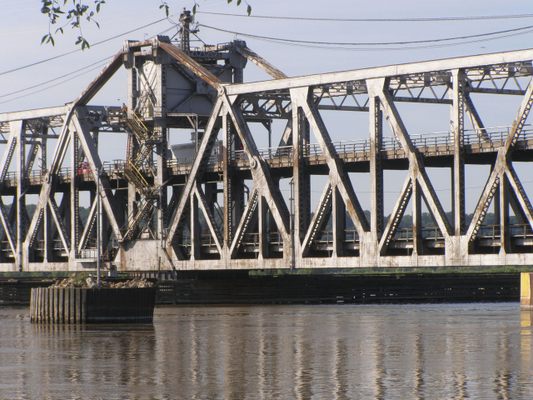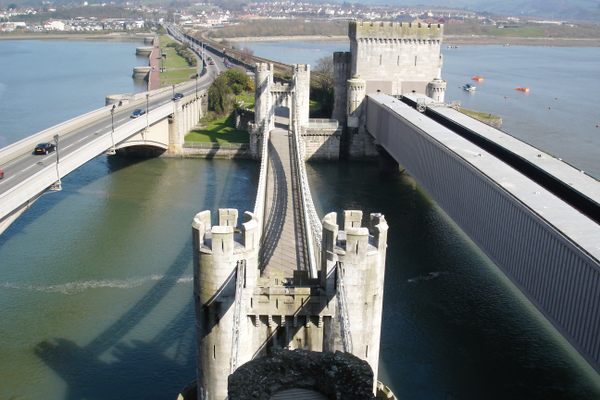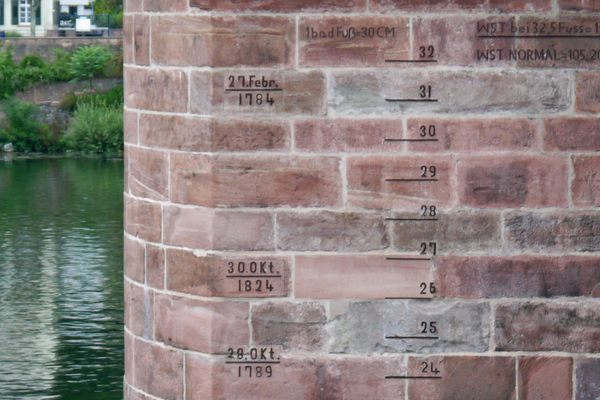About
The Mississippi River has long been a source of inspiration and a critical waterway for Indigenous peoples, like the Sauk, and later white settlers in the region. But when the Iowa Territories were granted statehood in 1847, the mighty Mississippi also became a barrier. This time period marked the beginning of massive changes in transportation and industry in the United States. Trains were coming to replace cumbersome and tedious travel by horse-drawn wagons. Sleepy Fort Madison was about to be nicknamed “Boom Town” due to a huge influx of railway workers to create a bridge to connect rail travel from Chicago with Iowa.
The original bridge was replaced in 1925 due to increasingly heavy traffic loads. The current structure now accommodates trains on the riveted double-track bottom layer and two lanes of cars above. However, on the Mississippi, water traffic still maintains the right-of-way. Approximately 2,000 times a year, the bridge must swing open to accommodate riverboats and barges which pass through the 525-foot opening. This amazing sight will stop all rail and car traffic across the bridge for about 15 to 20 minutes.
Fort Madison contains many prime viewing spots for boats, trains, and automobiles crossing or following the Mississippi River. The Willow Patch Access boat ramp is ideal for close-up views of the bridge to the East and the Historic Iowa State Penitentiary to the West. In the hotel bar at the Kingsley Inn on Avenue at 707 Avenue H, patrons can sip an old-fashioned while watching trains and barges travel North-South through the picture window. Or those with more modern predilections can enjoy an adult beverage while watching the 24-hour live stream of the bridge on big screen TVs.
Related Tags
Know Before You Go
The bridge can be seen from many historical points throughout Fort Madison. The Willow Patch access point has ample parking at is open from 6AM to 11PM.
Published
August 23, 2022






















